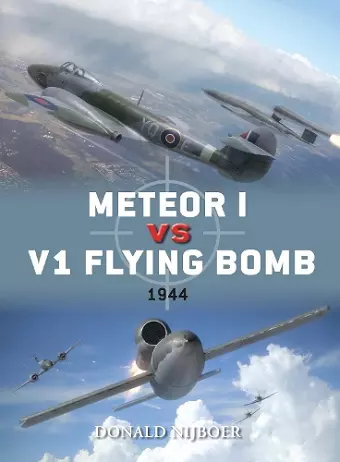Meteor I vs V1 Flying Bomb
1944
Donald Nijboer author Jim Laurier illustrator Gareth Hector illustrator
Format:Paperback
Publisher:Bloomsbury Publishing PLC
Published:20th Oct '12
Currently unavailable, and unfortunately no date known when it will be back

The Luftwaffe's desperate reliance on jet technology led to the world's first cruise missile attack on one of the world's largest cities and also heralded the first air-to-air combat between jet-powered aircraft. This is the story of that combat.
A total of 10,500 missiles were launched as part of the V1 attack, of which 3,957 were destroyed by the defences. Indeed, it could have been much worse, for by the end of the war the Germans had manufactured close to 32,000 flying bombs. The defences put forward to guard against the V1 were formidable – 23,000 men and women with their guns, radar and communications networks were installed on coastal sites.
Squadrons of Britain's newest Spitfires, the F XIVs, and Hawker Tempest Vs were kept at home to battle the new menace. Rushed into action in July 1944 to help counter the V1 threat, Britain's Gloster Meteor I was the first jet fighter to enter RAF service. On 4 August the Meteor scored its first V1 victory. Having just closed in on a flying bomb, its officer squeezed the trigger but his guns jammed. Using the Meteor's superior speed, he was able to overtake the missile and, using his wing tip, he tipped the craft over and sent it crashing into the ground.
This detailed, illustrated account explores these historic interceptions between the V1 and Britain's Gloster Meteor, and how they ushered in a new era of aerial combat.
ISBN: 9781849087063
Dimensions: 244mm x 180mm x 3mm
Weight: 300g
80 pages